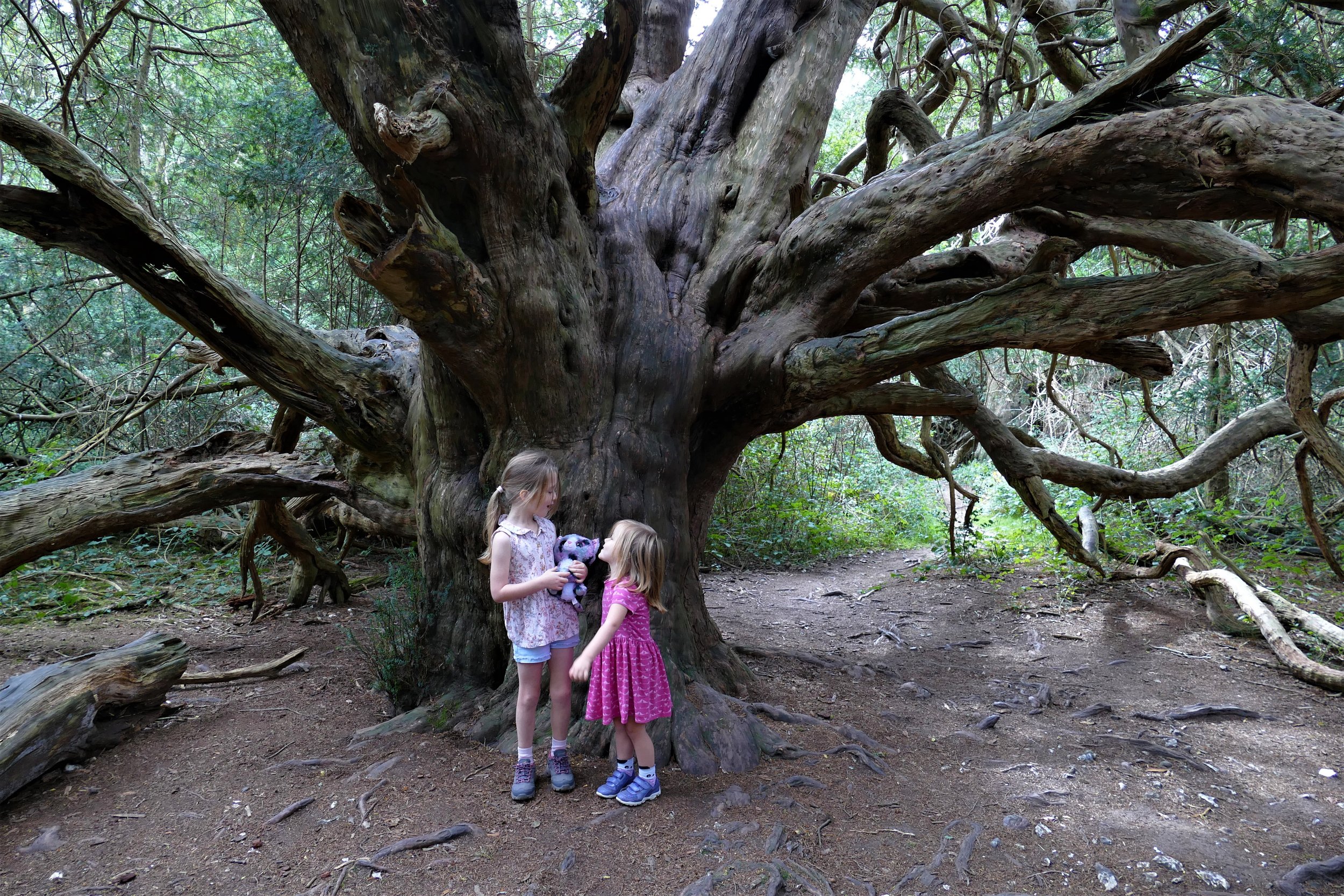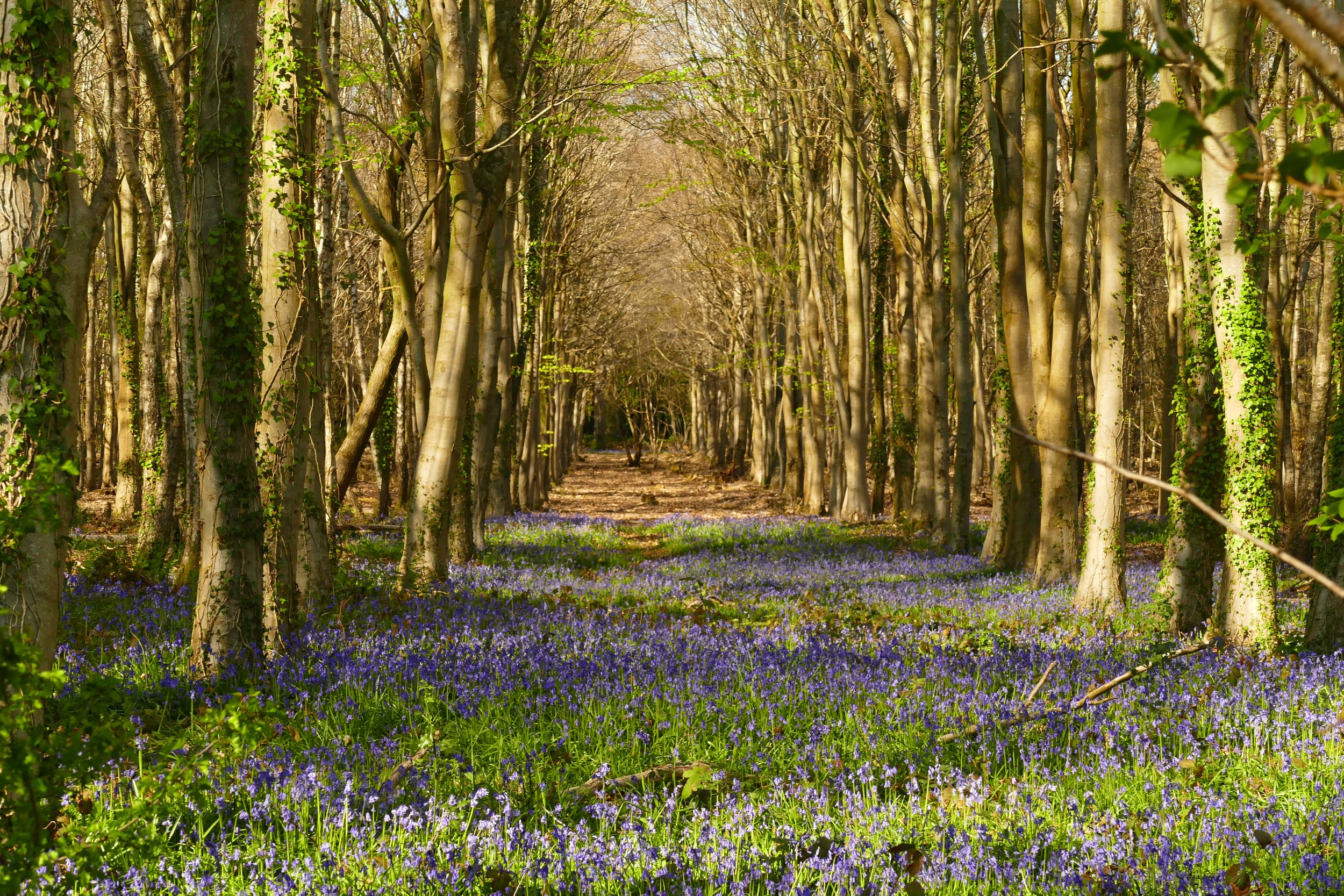Kingley Vale
Chichester
On this walk, children will enjoy the trees of the ‘magical’ yew forest, a giant deckchair and racing up and down the hilltop mounds.
The views from the Devil’s Humps stretch as far as the sea
The Basics
Time: 2 hrs
Distance: 5.8 km
Terrain: Woodland paths and downland, one steep climb, three kissing gates
Pushchair: The path to the nature reserve is flat and pretty well surfaced. There is a fairly wide kissing gate into the reserve and then the flat path continues up as far as the yew groves. It might be advisable to ‘park up’ and carry little ones around the yew grove. After this, the paths become steep and uneven.
Dogs: Yes, there can be grazing cattle in the top section
Refreshments: None, but a picnic at the top whist enjoying the views is recommended
Toilets: None
Public Transport: There is no public transport to this location
Parking: Car park at West Stoke, Downs Road, free (Postcode: PO18 9BE - W3W: beanbag/twitches/dimes)
The yew trees are some of the oldest living things on the British Isles
Kingley Vale, near Chichester, is one of the UK’s original national nature reserves with some of the oldest trees in the country. It is a truly atmospheric place to walk, and as well as the grove of ancient trees, you will also find spectacular views that stretch as far as the sea.
The Route
From the car park, there is an obvious trail through a gate along which there is a flat 15 minute walk to the nature reserve.
At the end of the trail you will see a kissing gate into the nature reserve along with information boards and a small visitor’s information hut. There are two marked trails starting from here. We recommend the nature trail as it takes in the yew forest, the Devil’s Humps and the hilltop views. The wooden posts are slightly eroded on top, but they should have painted green arrows and numbers on top. There are 26 marked posts that will guide you on a circular walk.
At the first fork, the posts should guide you right and into the first grove with the oldest yew trees. They are remarkable trees with a gnarly twisted appearance that makes you feel like you have stepped onto the set of a Lord of the Rings film. It’s a magical place! Towards the end of this section there are currently some fallen branches to hop over before the markers bring you back out into the open and onto the chalky path.
Opposite a roped off area and a notice about ash dieback, look out for the post taking you right and back into the yew groves. You will pass by some more magnificent trees before finally emerging at the bottom of an escarpment.
The nature trail post will direct you to the right, where you will see a worn path snaking up the hillside and into trees. We like this route as the forest of twisted younger yew trees that you pass through is a really bizarre sight. If you want a more direct route up the hill, however, you can ignore the nature trail posts for this section and take the steep path to your left, passing the giant deck chair and then utilising some steps cut into the hillside.
Following the nature trail up the hill, you will pass a dew pond (look out for frogs) and then you will enter a forest of yew trees that look like babies in comparisons to the grandads at the bottom of the vale. As you exit the trees, the path will veer left and gradually take you along the edge of the escarpment. Gradually, spectacular views across the whole of Chichester Harbour will begin to reveal themselves to your left.
Continue to the kissing gate and after this look out for the mounds of the Devil’s Humps. The views will be at their best from here and this makes a good place for a picnic on warm days.
To make your way back down, look out for the kissing gate just beyond the humps. This will lead you back down through yet more yew trees and will eventually bring you to the visitor hut at the bottom and the route home. This descent can be muddy and thus slippery in winter, so you can also come down the hill via the right hand track that also starts just after the humps. This is a better surfaced track and although it does not go through the atmospheric forest, it does have some nice views to the coast.
There is a really useful PDF about the trail and nature reserve that you can download from The South Downs National Park website
Did you know?
The twisted and ancient yew trees in the first grove are among the oldest living things in Britain. Several are at least 500 years old, with the oldest measuring more than five metres in girth.
If you liked this walk…
…try this one at West Stoke Wood which is the woodland just before the car park. It is an astonishing sight in bluebell season.
We are passionate about keeping The Ambling Path as a free resource available to everyone, forever. If you have enjoyed using our walking guides, then please consider leaving us a donation. This will help to cover our costs as well as rewarding the considerable time and effort needed to maintain the site. Thank you.

































